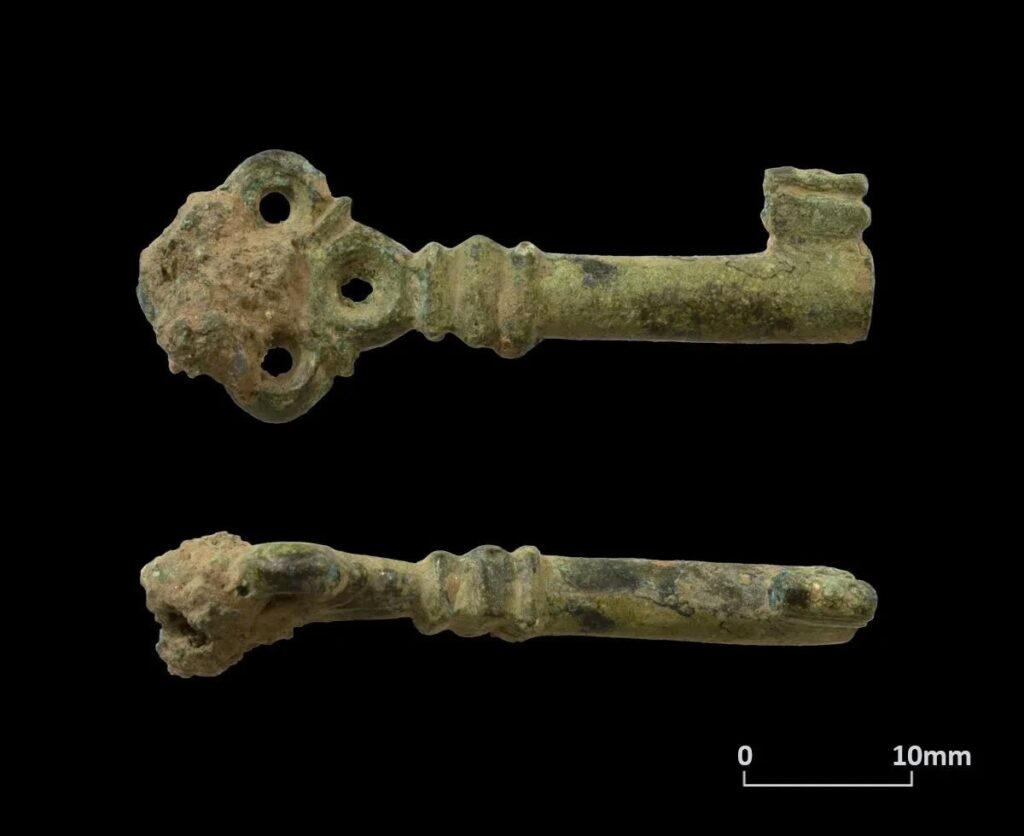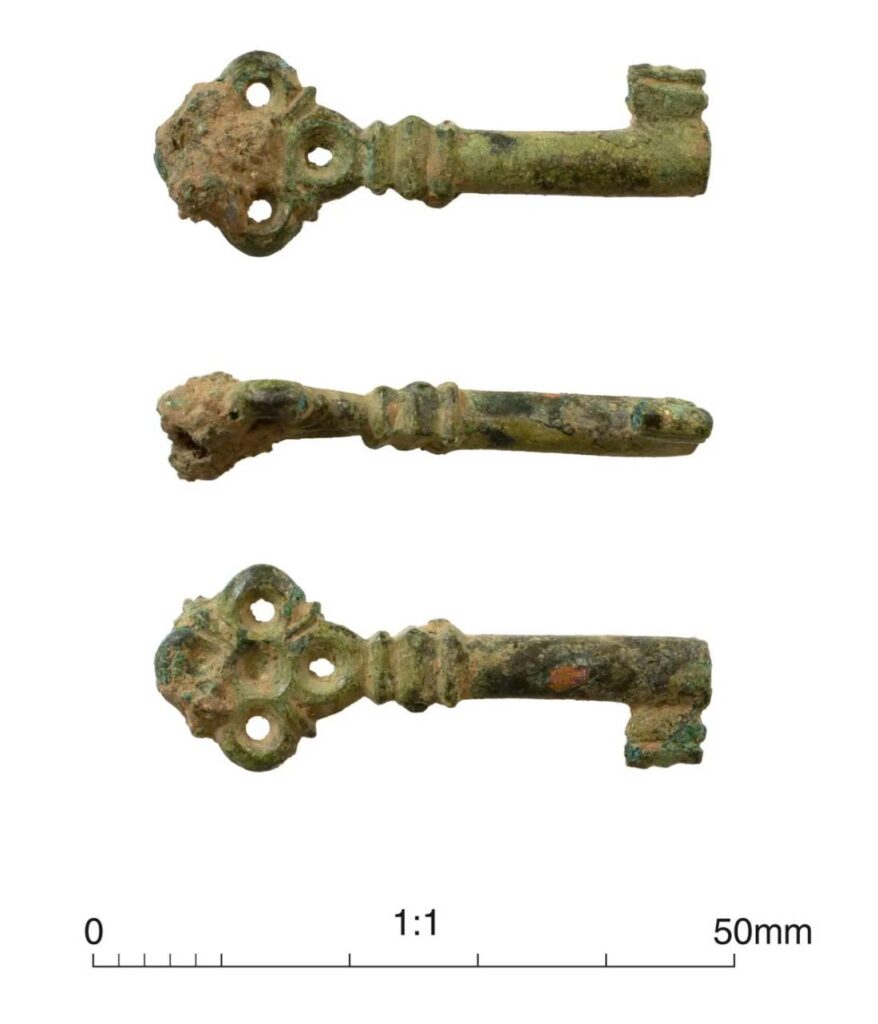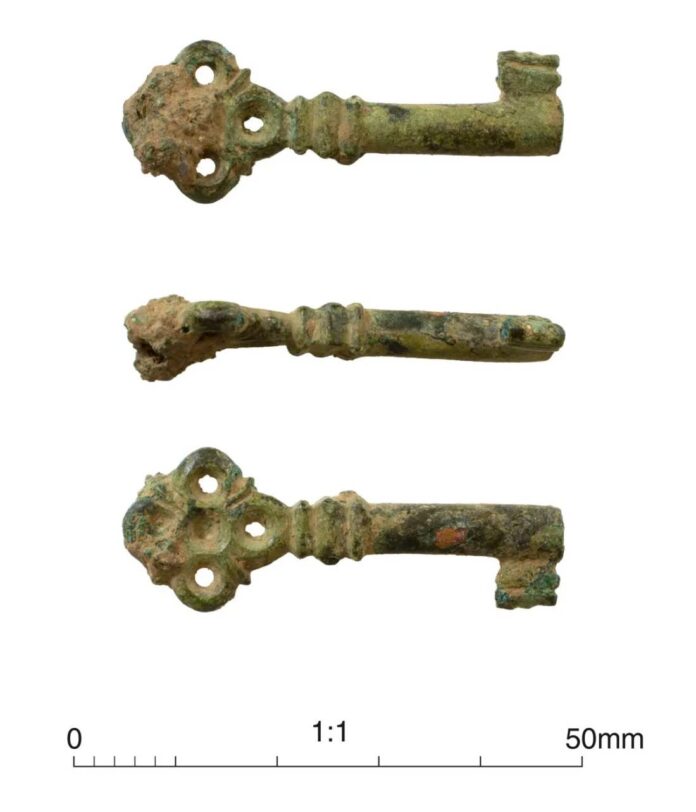A Surprising Discovery in North Somerset
In the quaint village of Claverham, North Somerset, UK, archaeologists from Cotswold Archaeology’s Kemble fieldwork team made an extraordinary discovery earlier this year. During a small excavation near the 19th-century Court De Wyck manor house, they unearthed a beautiful medieval key with a unique design, offering a tangible link to the area’s rich history.

The Excavation: Uncovering Layers of Time
The team’s primary goal was to find evidence of the original medieval manor that once stood on the site. As they dug, they revealed a series of walls from various periods, each telling its own story of the manor’s evolution. It was among these architectural remnants that the remarkable key was found, associated with a post-medieval wall that followed the alignment of the medieval manor’s boundary.
The Key: A Window into Medieval Craftsmanship

This late medieval key, dating from approximately 1300-1539, is a prime example of a rotary key. Its design allowed it to fit into a lock and rotate, lifting tumblers or levers to open the mechanism. What makes this key particularly special is its ornate craftsmanship:
- Made of copper alloy
- Decorated bow (handle) featuring a quatrefoil or ‘four-leaf clover’ design
- Perforations in each petal and the center of the quatrefoil
- Three sub-rectangular mouldings forming a bulbous collar
- Circular, hollow stem
- Sub-rectangular bit with at least one groove or channel
The Evolution of Keys: From Ancient Times to Medieval Innovation
Early Beginnings
The story of keys and locks dates back to ancient Babylon and Egypt, some 6000 years ago. Initially crafted from wood, these early designs were bulky and easily broken, prompting a need for more durable solutions.
Roman Advancements
The Romans significantly improved key and lock designs by introducing metal construction and wards, enhancing both durability and security. Keys became smaller and more portable, with some wealthy Romans even wearing ornate keys as jewelry to showcase their status.
Medieval Mastery
The Claverham key represents a continuation of this tradition of elaborate key-making. While similar to the ‘London type VI’ keys common in medieval times, this specimen is notably smaller, likely belonging to a less common form of medieval key. Its size suggests it may have been used for a door or chest, though its exact purpose remains a mystery.
A Key to the Past
As archaeologists continue to study this exquisite artifact, it serves as a reminder of the craftsmanship and artistry of medieval times. The Claverham key not only unlocks our imagination but also provides valuable insights into the daily lives and technologies of our ancestors, bridging the gap between past and present in the most tangible way

